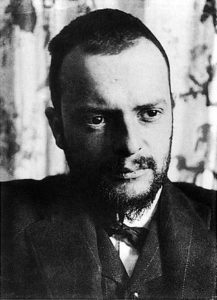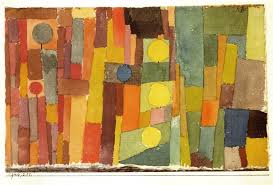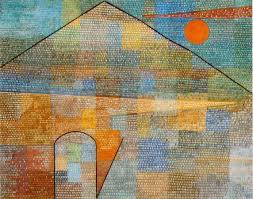Paul Klee (18 December 1879-29 June 1940)
First of all, the art of living; then as my ideal profession, poetry and philosophy, and as my real profession, plastic arts; in the last resort, for lack of income, illustrations.
— Paul Klee
https://www.davidzwirner.com/exhibitions/paul-klee-late-klee
In his early years, following his parents’ wishes, Klee focused on becoming a musician; but he decided on the visual arts during his teen years, partly out of rebellion and partly because modern music lacked meaning for him. He stated, “I didn’t find the idea of going in for music creatively particularly attractive in view of the decline in the history of musical achievement.” As a musician, he played and felt emotionally bound to traditional works of the eighteenth and nineteenth centuries, but as an artist he craved the freedom to explore radical ideas and styles. At sixteen, Klee’s landscape drawings already show considerable skill.
In January 1911 Alfred Kubin met Klee in Munich and encouraged him to illustrate Voltaire’s Candide. His resultant drawings were published later in a 1920 version of the book edited by Kurt Wolff. Around this time, Klee’s graphic work increased.
In autumn 1911 he made an acquaintance with August Macke and Wassily Kandinsky, and in winter he joined the editorial team of the almanac Der Blaue Reiter, founded by Franz Marc and Kandinsky.
The first Blaue Reiter exhibition took place from 18 December 1911 to 1 January 1912 in the Moderne Galerie Heinrich Thannhauser in Munich. Klee did not attend it, but in the second exhibition, which occurred from 12 February to 18 March 1912 in the Galerie Goltz, 17 of his graphic works were shown.
Klee’s artistic breakthrough came in 1914 when he briefly visited Tunisia with Macke and Louis Moilliet and was impressed by the quality of the light there. He wrote, “Colour has taken possession of me; no longer do I have to chase after it, I know that it has hold of me forever… Colour and I are one. I am a painter.”

After returning home, Klee painted his first pure abstract, In the Style of Kairouan (1914), composed of coloured rectangles and a few circles. The coloured rectangle became his basic building block, what some scholars associate with a musical note, which Klee combined with other coloured blocks to create a colour harmony analogous to a musical composition. His selection of a particular colour palette emulates a musical key. Sometimes he uses complementary pairs of colours, and other times “dissonant” colours, again reflecting his connection with musicality.
By the early 1930s Klee was at the peak of his creative output. His Ad Parnassum (1932) is considered his masterpiece and the best example of his pointillist style.

He was a natural draftsman, and through long experimentation developed a mastery of colour and tonality. Many of his works combine these skills. He often used geometric forms and grid format compositions as well as letters and numbers, frequently combined with playful figures of animals and people. Some works were completely abstract. Many of his works and their titles reflect his dry humour and varying moods; some express political convictions. They frequently allude to poetry, music and dreams and sometimes include words or musical notation.

